SIGGRAPH 1993: Machine Culture
Chair(s):
- Simon Penny
-
- Carnegie Mellon University
Location:
Anaheim, California, United States of America
Dates:
August 1st-6th, 1993
Art Show Overview:
Machine Culture: The “Virtual Frontier”
The goal of this exhibition is to offer a survey of the current state of interactive and virtual art practice around the world. Many people are unaware that the full name of SIGGRAPH is “special interest group on graphics and interactive techniques.” In this spirit, machine culture takes a wide view of interactive techniques. Not only will you find screen-based and interactive laserdisk artworks, but interactive environments, robotic artworks, and immersive systems. Artists in this exhibition are gathered from many countries, including Australia, Canada, Holland, Japan, Germany and the U.S.
1993 is perhaps the first time that an exhibition of such scale has been possible. This is due in part to the availability of sophisticated technology to artists, and simultaneously, the cultural interest in these technologies as culture machines. SIGGRAPH is perhaps the only place that such an exhibition could occur, as it gathers both the technology and the goodwill of the makers of these technologies.
Artistic use of interactivity is a new field. For the artists included here, the nature of interaction and the interactive interface is a prime concern. The definition and use of that interface in this exhibition is diverse, and quite at odds with the increasingly narrow usage in interactive consumer electronics. The interface is the place where the machine meets culture; it is the place where the machine meets the body. These artists question which parts of the body the machine might converse with, and in what ways. Most of the artists represented in this exhibition are newcomers to SIGGRAPH, younger artists, many from outside the U.S., with novel approaches to interactive technologies. These artists have gone to considerable effort to bring and install their complex works for the consideration of the SIGGRAPH audience.
The catalog to this exhibition, the machine culture section of the 1993 Visual Proceedings, has offered these artists the opportunity to speak about their complex works and the ideas behind them. The catalog also includes a specially commissioned set of essays that is the first collection to address interactive and virtual art practice. Though some of the essayists are familiar to the SIGGRAPH membership, many are unfamiliar, and offer dynamic critiques. It is my hope that machine culture will bring the SIGGRAPH community together with active artists and thinkers in interactive technologies from the art world in an exchange of ideas and in the hope that a more sophisticated discussion of the cultural dimension of interactivity will result.
We are witnessing the construction of a new professional identity the interactive media artist, an inter-disciplinarian as comfortable with cultural coding as with computer code, and as familiar with the jargon of the art studio as the computer lab. There are those of us who have crossed over, in one direction or the other, but the generation at home in both places is just arriving. Some of them are in this exhibition. It is they who will invent interactive art.
I’d like to express my gratitude to the artists and essayists without whom this publication and exhibition would have been impossible, and likewise to the companies and individuals who have loaned hardware and software. The members of the advisory committee for machine culture are: Gary Warner, Australian Film Commission; Erkki Huhtamo, independent theorist and curator (Finland); Jeffrey Shaw, director of the Institute for Image Media,Zentrum fur Kunst und Medientechnologie, Karlsruhe, Germany; Richard Wright, lecturer in computer graphics, London Guildhall University (Formerly City of London Polytechnic), UK; and Machiko Kusahara, independent curator and consultant, Japan. The committee has functioned in a different fashion from SIGGRAPH art show committees of the past. All the committee members live outside of the U.S. and have an active professional interest in interactive media. My charge to them was to suggest artists and artworks for the exhibition and assist those artists to take part in the exhibition-I am grateful for their advice and assistance. I’m particularly grateful to my assistant in the machine culture project, Harry Fozzard, who has taken an active, intelligent, and responsible role in planning the exhibition, in editing and designing this document, in corresponding with contributors and sponsors and all the other duties that fell to him. I’d also like to thank my colleagues on the SIGGRAPH 93 committee with whom it has been a pleasure and an honor to work, in particular, Alyce Kaprow, who has been a constant source of advice and good humor. And thanks especially to Molly Morgan-Kuhns, Mark Resch, and Bob Judd for their support and guidance. This project is dedicated to the memory of Felix Guattari.
SIMON PENNY
Machine Culture Chair,
Carnegie Mellon University
Exhibition Artworks:
-
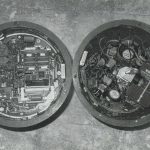
Adelbrecht
[Martin Spanjaard]
Categories: [Interactive & Monitor-Based] -
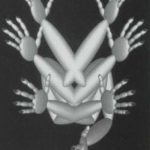
Animatrix: Interactive Computer Installa...
[Nasahiro Miwa] [Akke Wagenaar]
Categories: [Installation] [Interactive & Monitor-Based] -
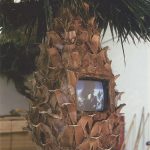
Another Day in Paradise
[Victoria Vesna]
Categories: [Installation] [Interactive & Monitor-Based] -

Bentlow Stairs: An Electronic Artist's B...
[Ed Cunnius] [Elnor Kinsella]
Categories: [Interactive & Monitor-Based] -

Blind Date
[Hillary Kapan]
Categories: [Installation] [Interactive & Monitor-Based] -

Catholic Turing Test
[Gregory P. Garvey]
Categories: [Interactive & Monitor-Based] -

Edge of Intention
[James Altucher] [Joseph Bates]
Categories: [Interactive & Monitor-Based] -

Espace Vectoriel
[Louis-Philippe Demers] [Bill Vorn]
Categories: [Installation] [Interactive & Monitor-Based] -

Family Portrait
[Luc Courchesne]
Categories: [Interactive & Monitor-Based] -

Faraday's Garden
[Perry A. Hoberman]
Categories: [Interactive & Monitor-Based] -
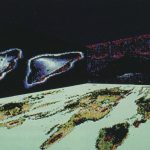
Fun House
[Carl Eugene Loeffler]
Categories: [Interactive & Monitor-Based] -
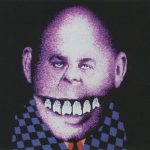
Hack
[Ian Haig]
Categories: [Interactive & Monitor-Based] -

Handsight
[Agnes Hegedüs]
Categories: [Installation] -

Hyper Scratch
[Haruo Ishii]
Categories: [Interactive & Monitor-Based] -
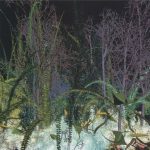
Interactive Plant Growing
[Laurent Mignonneau] [Christa Sommerer]
Categories: [Interactive & Monitor-Based] -

Liquid Views
[Christian A. Bohn] [Monika Fleischmann]
Categories: [Installation] [Interactive & Monitor-Based] -

Neuro Baby
[Naoko Tosa]
Categories: [Interactive & Monitor-Based] -

Onyrisk
[Suzie Dumont] [Eric Mattson]
Categories: [Interactive & Monitor-Based] -

Public Domain Kiosk Project
[Public Domain Inc.]
Categories: [Installation] [Interactive & Monitor-Based] -

Room of One's Own
[Lynn Hershman]
Categories: [Installation] [Interactive & Monitor-Based] -

Small Planet
[Myron W. Krueger]
Categories: [Interactive & Monitor-Based] -

The Data Mitt
[Ken Goldberg] [Richard S. Wallace]
Categories: [Interactive & Monitor-Based] -
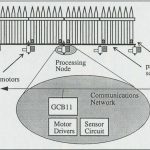
The Fence
[Coactive Aesthetics]
Categories: [Installation] -

The Flock
[Mark S. Grossman] [Kenneth E. Rinaldo]
Categories: [3D & Sculpture] -

The Garden of Earthly Delights
[Agata Bolska]
Categories: [Installation] [Interactive & Monitor-Based] -

The Labyrinth
[Fred Truck]
Categories: [Interactive & Monitor-Based] -

The Machine in the Garden
[Nancy Paterson]
Categories: [Installation] [Interactive & Monitor-Based] -
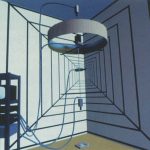
The Vorkapitchulator
[Sheldon Brown]
Categories: [Installation] -

Typhoid Mary
[Linda Dement]
Categories: [Interactive & Monitor-Based] -

Virtual Cage
[Christian Möller]
Categories: [Installation]
Exhibition Writings and Presentations:
-
Title:
Feedback to Immersion
Author(s):
Category: Essay
Abstract Summary:
Cybernetics speculates about the coupling of machine and person. Since Norbert Wiener’s seminal Cybernetics or Control and Communication in the Animal and Machine (1948), the trajectory of technology development has been one of an increasing possibility of achieving that interface. In the past decade, the possibility of defining a relationship not simply between but within technology has become plausible. Yet the commercialization of cybernetics comes neither as a technical panacea nor without deep ethical concerns. As machines mutate into biology, the philosophical and political values of technology are challenged to confront more than conceptualized situations but rather to theorize the materiality of programmed or enhanced being. At the same time, the development of”realities” that are characterized as immersive or virtual are beginning to surround experience. The penetration of technology within the body and the socialization of simulated realities is more than a signifier of technological progress-it marks a transformation of knowledge, of biology, and of the cultural order in which knowledge is linked with ideology, biology with identity in terms of a technological imperative not necessarily connected with necessity. The issues raised by this potential for the narrowing of the boundary between technology and experience are vast. In many ways the development of several parallel technologies has reached a crucial point.
[View PDF]Title: Interaction and Play
Author(s):
Category: Essay
Abstract Summary:
“I prefer the form of seduction for it stems from a mysterious duality/confrontational relationship, an enticing, intense, and covert attraction between the living and the non-living. It is not a form of response, but a challenge, a duel, imbued with an intriguing sense of distance and constant antagonism on which the rules of theme are also based.” – Jean Baudrillard
Reflecting upon the frantic commotion surrounding the new media, one can easily gain the impression of a world turned upside down. Naturally, there are technologies available today that in the course of evolution have attained a certain degree of complexity and perfection offering mindboggling possibilities not only for the entertainment industry but for the artist as well. However, when we consider the perilously desolate state of computer art, it is difficult to understand why in our so-called post-modern era-inured as we are to the euphoria of technological advances-so much rhetorical and institutional endeavor is being invested in persuading artists to take up technologies that neither they nor their recipients really comprehend. Traditional modernists might, of course, take a more balanced view and contend that a different artistic concept is needed. They may also view that the arts simply have to yield to state-ofthe-art technology and its inherent forms of perception in order to remain contemporary, or offer viable alternatives to the prevailing forms of application. But occasionally it is difficult to avoid the impression that instead of the artist creating the art, it is the art and the artists that now have to be manufactured for a technology, which has not arrived but has made deep inroads into our daily existence. If we exclude musicians and composers, artists have been very reticent in availing themselves of the computer, in the area of computer graphics, it was the technicians, programmers, and scientists who first submitted computer images as art. Quite the contrary was true in photography, cinema, or video, where artists soon seized upon this technology and began developing it in the initial phases without the generous support from the state and patrons of the arts.
[View PDF]Title: It is Interactive—but is it Art?
Author(s):
Category: Essay
Abstract Summary:
“The possibilities of egalitarian, more democratic, constructive forms offering new kinds of interaction, knowledge, and understanding may well be enhanced by the novel capabilities of the new technologies. They will, more than ever before, have to be struggled for.” – Andy Darley
The Myth of Interactivity
“Well, my next thing is going to be something interactive … ” For some years now, this has been a stock answer in interviews with artists, and not only those who already work with electronic and digital technologies. Indeed, “interactive art” seems well on its way to becoming the art form of the 1990s. Yet one shouldn’t let its present visibility delude oneself. Although contemporary interactive art may seem “groundbreaking,” the ground had already been grubbed by such movements as Fluxus and E.A.T. (Experiments in Art and Technology) in the 1960s, as well as by a great variety of “postmodern” strategies, emphasizing recycling, deliberate confusion between “the original” and “the copy,” and aiming at repositioning, sometimes to the point of reconstituting, the traditional art audience.
Title: Light and Dark Visions
Author(s):
Category: Paper
Abstract Summary:
Critical theory and cultural studies are increasingly being used to understand the function of the arts in contemporary technology-dominated, postmodern culture. This essay examines the relevance of these analyses to the work of artists who use emerging technologies. The first section reviews core concepts that are useful for understanding art/technology linkages from postmodernist, post-industrialist, and post-structuralist writers. Concepts discussed include the rejection of the modernist idea of a single dominant cultural stream, the demarginalization of diverse voices, the increasing importance of information and the impact of mediated image and representation on ideology and behavior, and the emphasis on deconstructing the language systems and meta-narratives that shape culture.
[View PDF]Title: Old Ideas in New Boxes
Author(s):
Category: Essay
Abstract Summary:
When we look at ‘cutting edge’ technologies, it is the radical newness that we are encouraged to see. This radical newness helps us forget that technologies arise out of past culture. The generation raised on Buck Rogers grew up to make the space race, and the generation raised on Star Trek are making the Holodeck. In order to understand the historical significance of 3D imaging, we must place it as part of the historical development of the automation of perspective. Lev Manovich has followed this line of study in his essay, as do Paul Virilio and Harun Farocki elsewhere. According to this line of reasoning, we must look at computer graphics, interactivity, and virtual reality as moments in the larger cultural progression of the automation of visual systems.
[View PDF]Title: Soft Future
Author(s):
Category: Essay
Abstract Summary:
Will you see a technological utopia, a city of gleaming metal spires orbiting spacecraft, a world spared from nuclear annihilation and united by a common belief in the benefits of rational progress? Nowadays, probably not. At most your vision is likely to be an end to recession, economic stability for at least a while, a new order of gray-suited bureaucracy. Perhaps you see nothing at all, just a hazy mist of half-forgotten ideals. But when I close my own eyes there is still something there lurking in the background, like a memory chopped up into disparate fragments. It coagulates, forming an surface-it is the surface of a computer screen.
[View PDF]Title: The Artistic Origins of Virtual Reality
Author(s):
Category: Essay
Abstract Summary:
The history of virtual reality is often obscured. It is easy to get the impression that the Big Bang occurred at NASA in 1984 and that virtual reality is a triumph of the technical establishment alone. What has been overlooked is the important contributions that artists have made to the development of the field.
[View PDF]Title: The Mapping of Space
Author(s):
Category: Essay
Abstract Summary:
1991 saw two events, of different importance and seemingly unrelated. One was the longawaited publication in English of what can probably be called the single most influential essay of modern art history—Erwin Panofsky’s Die Perspektive als ‘Symbolische Form.’¹ The interest generated around the re-emergence of this legendary essay, written in 1924-1925, demonstrates that the problem of perspectival representation is still felt to be relevant to contemporary culture. The second event was the Gulf War, the outcome of which was largely predetermined by Western superiority in the techniques of perspectival representation.
[View PDF]Title: Virtu-Real Space:
Author(s):
Category: Essay
Abstract Summary:
A significant shift is occurring in the makeup, physical nature, and composition of space as it is experienced in contemporary culture. This shift, which is a direct result of the ubiquitous presence of information technologies in the cultural landscape, signals that physical components alone no longer comprise the infrastructure of the contemporary social environment. The ads, which show American Express cards in locations where they function as architectural elements (i.e., a bridge support, a path on a golf course, a canopy over a restaurant dining area, and others), indicate that it is now a combination of physical components and virtual systems that support and sustain the “real” world. Virtual credit space, symbolized in the advertisements by the credit card, functions not only as structural support for the physical world, but also as solid footing and shelter for the people who live in that world. And since virtual credit space is operationalized by information technologies, it becomes clear in these commercials that the extent to which physical space has been infiltrated by information technologies is both extreme (the cards are pervasive) and covert (no one in the ads notices the cards). Furthermore, because the cards blend into their surroundings unnoticed, these corporate images also indicate that information technologies are our natural setting. It becomes clear, then, that the use of the credit card icon in these commercials represents the extent to which information technologies have become naturalized as an intrinsic part of contemporary social life.
[View PDF]



